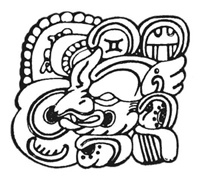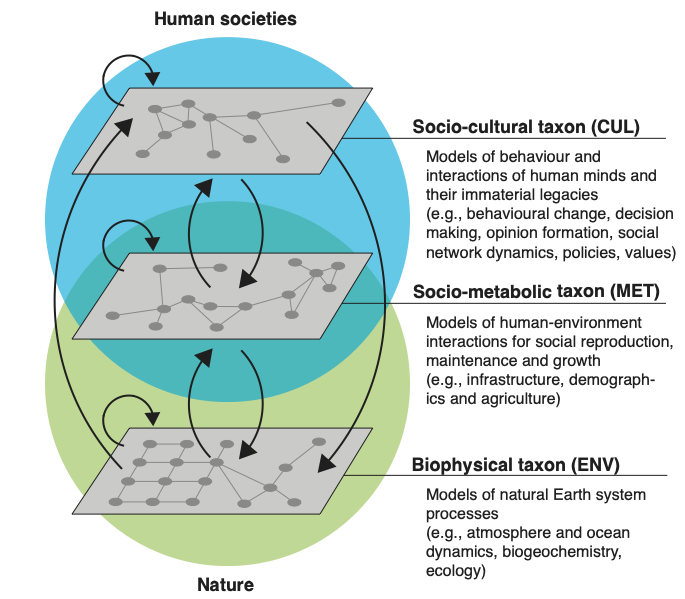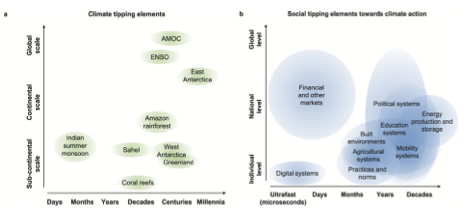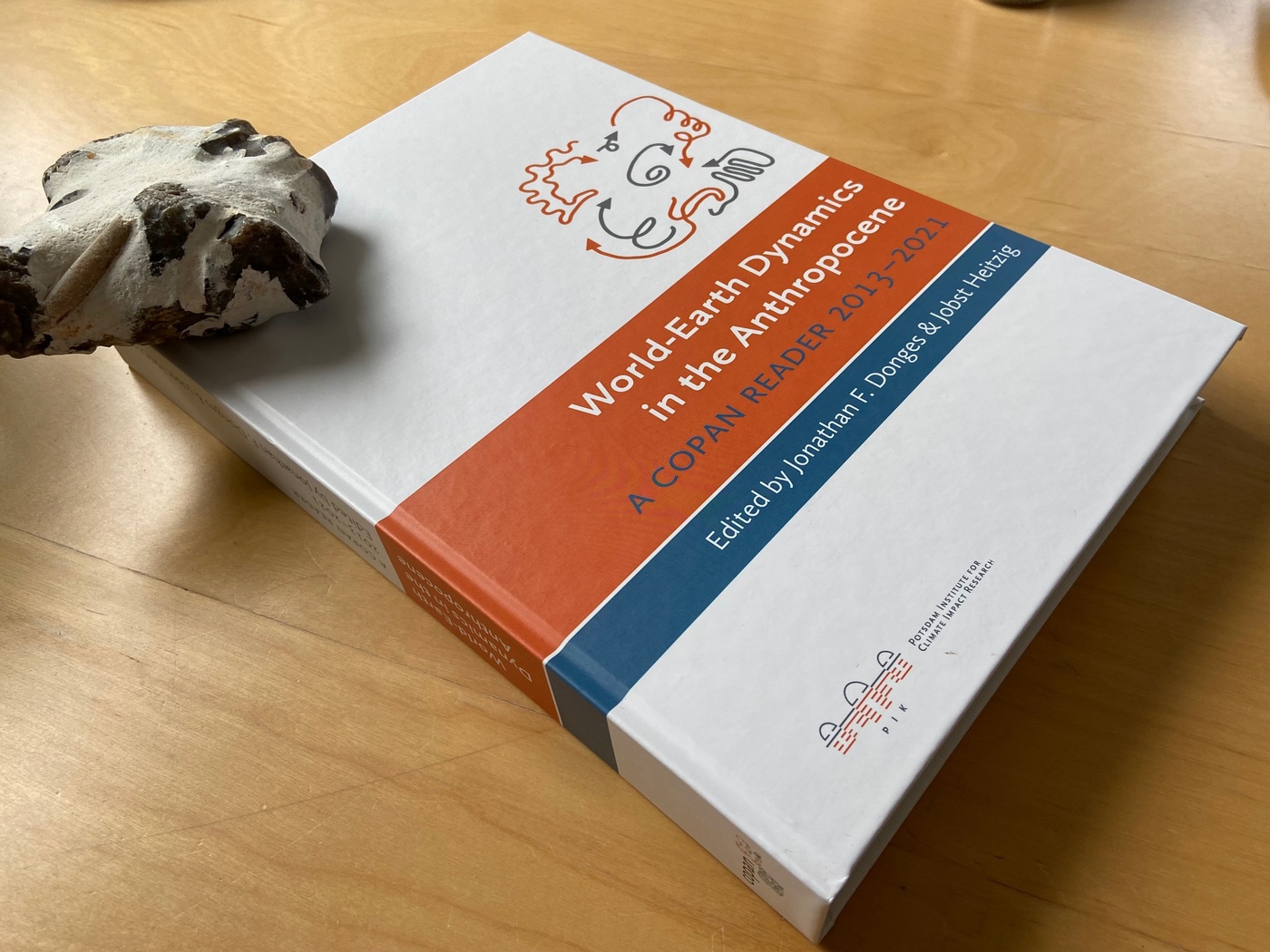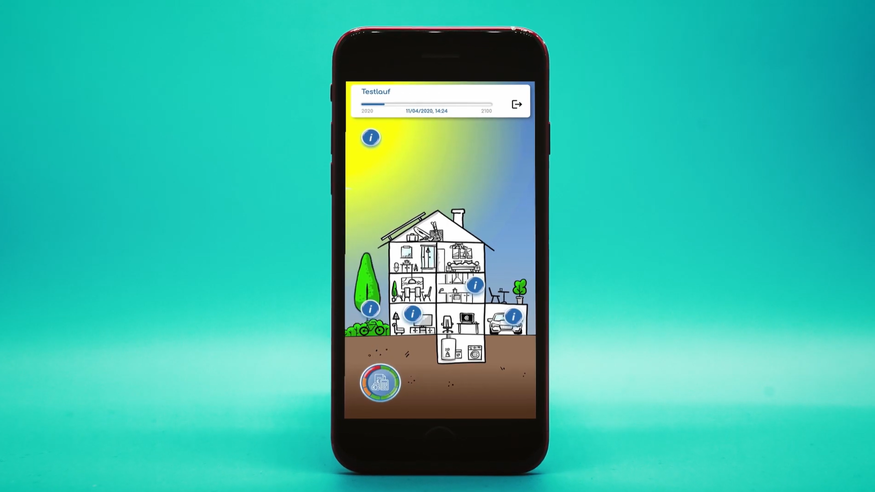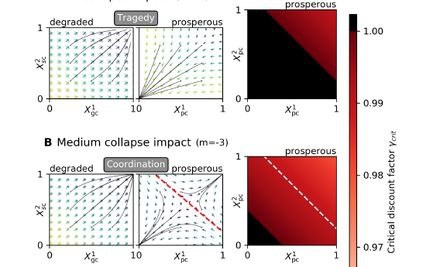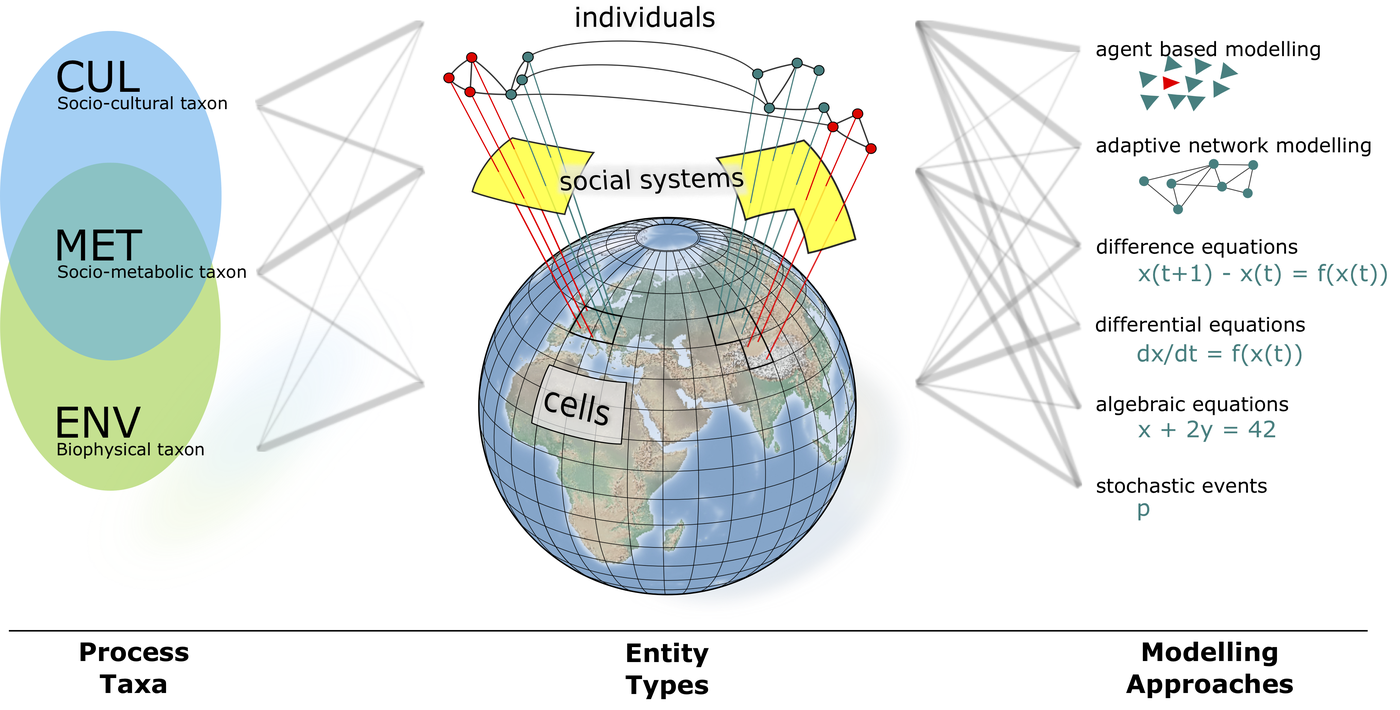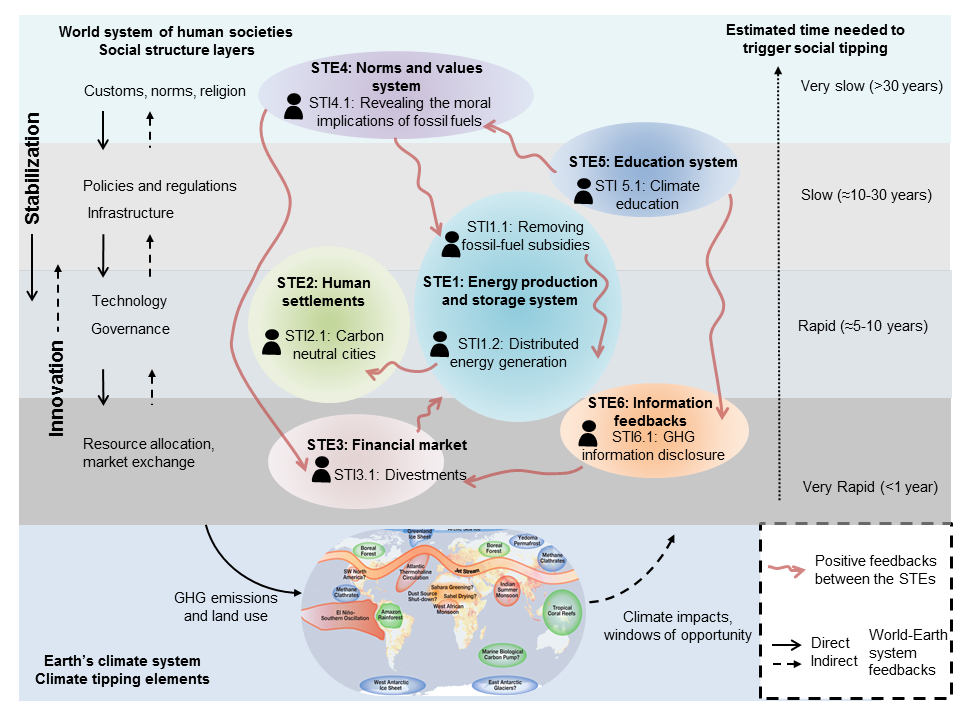copan is a collaboration between the working group Whole Earth System Analysis (RD1) and PIK's FutureLab on Game Theory and Networks of Interacting Agents, with strong links to PIK's FutureLab on Earth Resilience in the Anthropocene. copan has been featured as a flagship activity of PIK in 2013–2018.
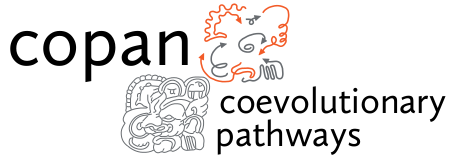
Follow us on Twitter: @pik_copan
Please see agenda setting paper: J.F. Donges*, R. Winkelmann*, W. Lucht, S.E. Cornell, J.G. Dyke, J. Rockström, J. Heitzig, and H.J. Schellnhuber, Closing the loop: reconnecting human dynamics to Earth system science, The Anthropocene Review 4(2), 151-157 (2017), News release (Stockholm Resilience Centre). * Shared first authorship.
Closing the loop. Understanding and modelling the Anthropocene, the tightly intertwined social-environmental planetary system that humanity now inhabits, requires addressing human agency, system-level effects of networks and complex coevolutionary dynamics in the World-Earth system (figure adapted from Schellnhuber, Nature 402, 1999).
We study the main linear and nonlinear feedbacks and alternative stable attractors in the mid- and long-term coevolution of natural and socio-economic subsystems of the Earth system like the great acceleration, great transformations, phase transitions between metabolic states, or societal collapses), natural and socio-economic planetary boundaries, and sustainable management pathways staying within these boundaries. We apply a multi-level and diversified approach combining conceptual models of equal simplicity in both natural and socio-economic dimensions, both agent-based and game-theoretic models of bounded rational economic and political agents, and adaptive network-of-network models of their interaction (like the bottom-up formation of international climate protection coalitions), forming a modular and flexible model portfolio. We aim at identifying emergent behaviour, scenarios, risks, and suitable management options and rules such as sustainability paradigms, collaborating closely with the Stockholm Resilience Centre and Princeton University in the scope of the Earth Resilience and Sustainability Initiative.
Methodology
COPAN is being developed on three pillars of research: data analysis, conceptual modelling, and theory building. The three research strands inform each other and, hence, co-evolve. Advanced methods of statistical data analysis and machine learning are used to detect patterns and significant processes in global socio-ecological data sets from heterogeneous sources capturing historical dynamics across scales. These findings inform the construction of conceptual models of coevolutionary dynamics and serve as a ground truth for model validation. Finally, theoretical insights derived from model experiments feed into refining data analysis methodology as well as help to reframe and focus our model development.
About the name and logo
Copán is an archaeological site of the Maya civilization in Honduras whose societal collapse had to do with overpopulation and resource overuse. The two parts of our project logo are derived from its Mayan name glyph shown here.

)
